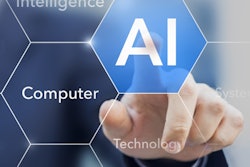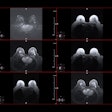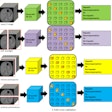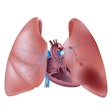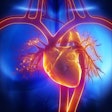There are many important things in healthcare that only a medical professional is capable of and AI cannot do, including but not limited to: empathizing with patients, feeling the joy of positive test results and sharing the heartbreak of negative, or exercising intuition honed over decades of experience treating patients in real-world clinical settings. Far from being expendable, human medical experts will remain the linchpin of our healthcare system and the indispensable “source of truth” whose inputs allow AI models to learn as they go in ways that improve patient health.
With that said, let’s now consider what generative AI can do to improve modern medicine and human health. This nascent field’s impact on radiology, in particular, has been nothing short of astonishing, ushering in a new era of diagnostic reliability and personalized cancer care.
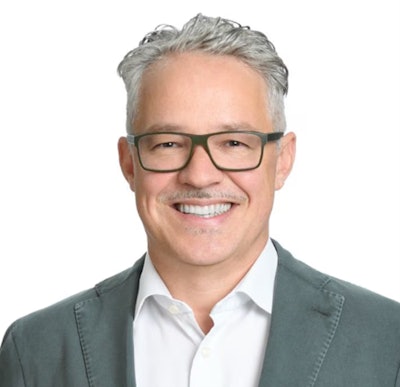 Roland Rott of GE HealthCare.
Roland Rott of GE HealthCare.
The rapid maturation of AI-powered medical imaging technology leaves me bullish that 2025 will be remembered as a watershed year in the global fight against cancer as we see more radiologists and oncologists equip themselves with the high-tech tools of tomorrow to deliver higher-quality care today.
AI’s coming of age in radiology couldn’t come at a more opportune time as the global cancer burden continues to rise. Cancer accounted for nearly 19 million deaths in 2022. By 2050, the number of new cancer cases is projected to increase to 35 million.
In recent years, researchers have gained a deeper understanding of the complexity and variability of cancer and how each individual’s body, molecular structure, and risk factors interplay with the disease.
Today, we know that successfully treating cancer may require expertise from multiple disciplines – from medical oncology to radiation oncology to surgical oncology – not to mention input from specialists in the specific organs and bodily systems impacted by the disease. AI is helping physicians navigate this complex field and tailor interventions to fit individual patients’ circumstances.
Lost time
Despite all this technological progress, one of the toughest problems in oncology is lost time. The best oncologists and most skilled surgeons can slow, but seldom stop, cancer caught too late. According to research published by the British Medical Journal (BMJ), cancer mortality risk increases 6% to 13% for every month a diagnosis is delayed.
Missed and delayed diagnoses happen in oncology for myriad reasons; the emergence of AI suggests we may finally have the tools to help tackle this complex problem. AI is giving radiologists crisper images with less noise and better analytics, providing a fuller and truer diagnostic picture to inform treatment decisions earlier in the care pathway when a patient’s chances for remission and long-term survivability are higher.
Deep-learning algorithms are likewise analyzing x-rays, CT scans, and MRI scans to greater effect, using pattern recognition to help detect malignancies and growths potentially missed by the human eye. Researchers are also pairing AI models with specific targeting compounds to help improve diagnostic accuracy.
Beyond detection alone, AI advancements are providing more information to clinicians about a potential tumor, helping aid in assessments of size and shape, and potentially helping predict the rate of growth and aggressiveness. This type of information can help inform patient monitoring strategies and treatment modifications, when necessary.
AI models can also flag suspicious areas for provider follow-up, which could help drive consistency, reducing variability between hospitals and among physicians. Administratively, AI is boosting workplace efficiency in understaffed hospitals with limited radiology resources by helping to ensure the most critical patients are prioritized.
AI is also used by radiologists when performing biopsies, helping to improve accuracy and confidence. For CT and MRI scans, AI is helping to pinpoint the precise location of tumors to help ensure radiation is delivered in a way that minimizes damage to surrounding healthy tissue.
Scratching the surface
We have achieved so much progress so quickly utilizing AI, and still, I believe we have only scratched the surface of our potential to transform cancer care.
As an example, consider lung cancer, which is usually detected in the disease’s advanced stages when treatment options are less effective. One of the most confounding diagnostic challenges involves determining when pulmonary nodules are benign versus when they are precursors to cancer. The uncertainty could lead to needless invasive procedures for healthy patients and, worse, diagnostic and treatment delays for patients with lung cancer in its earliest, most treatable stage.
Today, thanks to AI-powered integration of imaging and medical device data, providers have advanced support to help them manage this complexity and optimize care for each patient. Clinicians now have access to tools such as U.S. Food and Drug Administration (FDA)-cleared AI-assisted diagnostic software for early-stage lung cancer, which can help improve the sensitivity and specificity of malignancy assessments. That is inspiring progress.
I personally believe the day will eventually come when AI helps us change the “C” word from “cancer” to “cure.” The technology is improving how radiologists detect and treat cancer by enhancing image analysis, reducing errors, predicting treatment outcomes, and enabling personalized care. While AI will never be a substitute for human medical expertise, I predict that 2025 will showcase many more examples of AI’s ability to improve the lives of cancer patients and the care offered by their providers.
Roland Rott is chief imaging officer at GE HealthCare.
The comments and observations expressed herein do not necessarily reflect the opinions of AuntMinnie.com, nor should they be construed as an endorsement or admonishment of any particular vendor, analyst, industry consultant, or consulting group.







